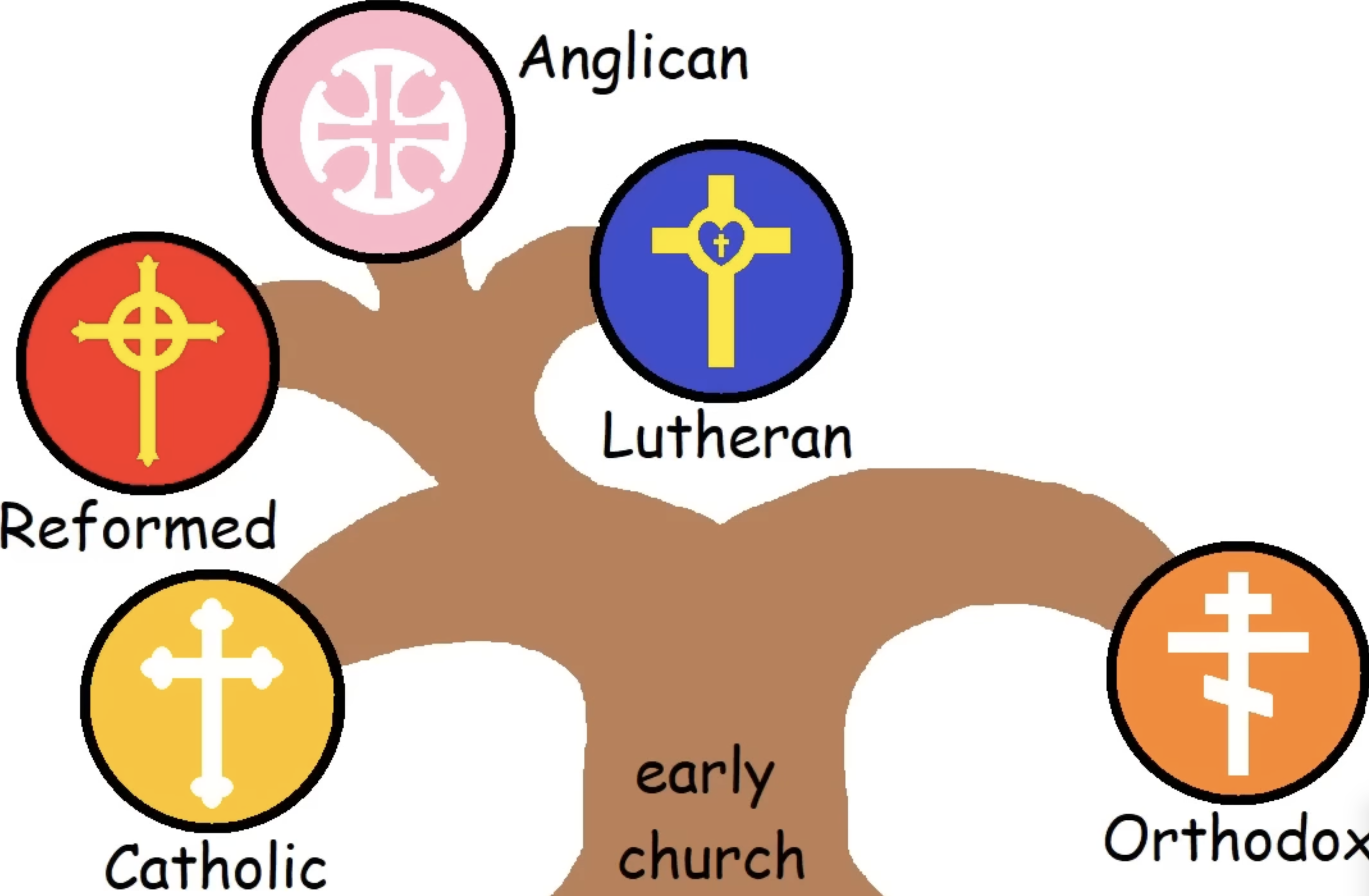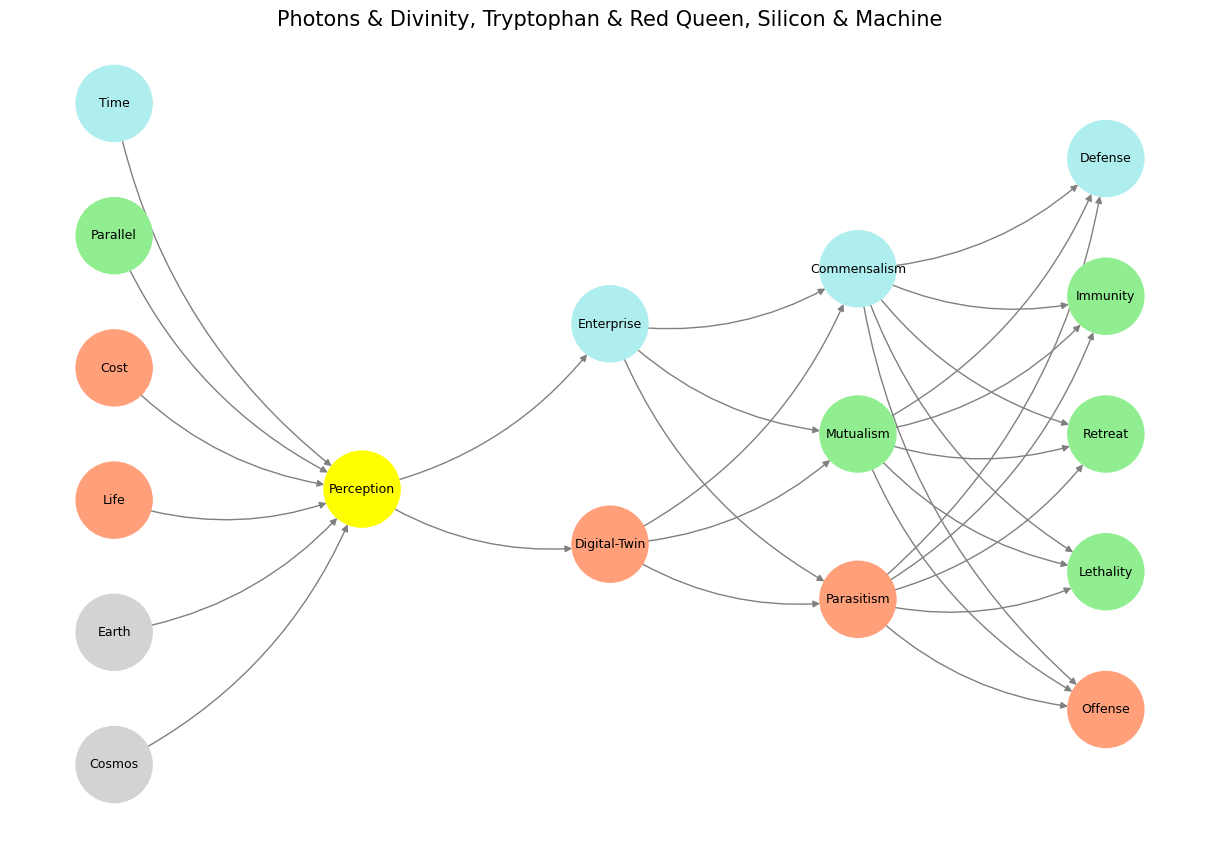Woo’d 🗡️❤️💰#
The Neural Network of Faith: Immutable Laws and Generative Pathways in Religious Evolution#
Religious traditions, like neural networks, can be understood as systems of compression and emergence, rooted in immutable foundations yet capable of branching into vast combinatorial spaces. The “early church” serves as a central node, from which distinct branches like Orthodoxy, Catholicism, Anglicanism, Lutheranism, and Reformed traditions emerge. Each branch reflects a different balance between the immutable and the generative—between the conservation of foundational laws and the exploration of new possibilities. This dynamic interplay provides a compelling lens to analyze not only the trajectory of Christian denominations but also the broader sociological implications of religious evolution.

Fig. 7 What Exactly Is It About? Might it be about fixed odds, pattern recognition, leveraged agency, curtailed agency, or spoils for further play? Grants certainly are part of the spoils for further play. And perhaps bits of the other stuff.#
Immutable Laws: The Stability of Orthodoxy#
The Orthodox Church, with its emphasis on tradition, represents the archetype of immutability. Its theology, liturgy, and hierarchical structure are deeply rooted in the pre-input layer of the religious neural network—a space dominated by immutable rules. This commitment to preserving the past has ensured the Church’s stability but has also constrained its ability to generate new pathways. Orthodoxy has largely avoided the theological and liturgical upheavals that have characterized Western Christianity, maintaining a static hidden layer that prioritizes continuity over exploration.
This immutability aligns with the nationalism often associated with Eastern Orthodoxy. From Greek Orthodoxy to Russian Orthodoxy, these churches are inextricably tied to specific nations and cultures, reinforcing their role as guardians of collective identity. However, this nationalistic focus may also explain their limited growth. By anchoring their identity to specific geopolitical and cultural contexts, these churches have struggled to transcend their regional boundaries. They are like a neural network that refines a single function to perfection but resists integrating new inputs or exploring alternative configurations.
Generative Pathways: The Explosion of Combinatorial Space#
In contrast, the Western branches of Christianity—particularly those emerging from the Reformation—have embraced generative pathways, creating vast combinatorial spaces of theology, practice, and outreach. Anglicanism, for example, represents an iterative equilibrium, blending Catholic and Reformed elements into a tradition that is both adaptable and coherent. Lutheranism, with its emphasis on faith and reason, has introduced dynamic harmonization, resolving theological tensions through intellectual rigor. The Reformed traditions, often more adversarial, have challenged established norms, driving transformation and innovation.
This generative capacity has allowed Western Christianity to adapt to new cultural, social, and intellectual contexts, fueling its global expansion. For better or worse, these branches have acted as the hidden layers in a neural network, compressing historical inputs into new forms that emerge as novel outputs. This adaptability has made Western Christianity the most dynamic and expansive force in religious history, capable of spreading across continents and influencing diverse cultures.
Growth and Generativity: For Better or Worse#
The generativity of Western Christianity raises profound questions about the trade-offs between stability and adaptability, between preserving immutable laws and exploring new possibilities. The explosive growth of Christianity’s Western branches has undeniably spread its influence, but at what cost? The generative pathways have often led to fragmentation and conflict, with new denominations emerging from every schism and theological dispute. This proliferation of branches risks undermining the coherence and unity of the original message, turning faith into a marketplace of competing interpretations.
At the same time, the lack of growth in Orthodoxy and Judaism highlights the limitations of immutability. By refusing to explore the combinatorial space of new possibilities, these traditions have preserved their identity at the expense of broader influence. Their resistance to generativity has ensured their survival, but it has also confined them to the margins of a rapidly changing world.
The Neural Network of Religion#
Religion, viewed as a neural network, reveals a delicate balance between immutable laws and generative pathways. The Orthodox Church and Judaism, with their focus on stability and continuity, represent the pre-input layer of immutable rules. Western Christianity, by contrast, embodies the hidden layer’s potential for compression and expansion, creating emergent outputs that adapt to new contexts. The nationalism of the Eastern churches and the static nature of Judaism reflect the challenges of immutability, while the dynamic growth of Western Christianity demonstrates the power—and the peril—of generativity.
Ultimately, the question is not whether one approach is better than the other but what each reveals about the human quest for meaning. Immovable traditions offer stability in an uncertain world, while generative pathways drive innovation and adaptation. Together, they form the neural network of faith, a system that mirrors the complexity of human experience and the eternal tension between the immutable and the emergent.
Show code cell source
import numpy as np
import matplotlib.pyplot as plt
import networkx as nx
# Placeholders (Substitute) for the neural network visualization
#1 Time (Paleturquoise)
#2 Parallel (Lightgreen)
#3 Cost (Lightsalmon)
#4 Life (Lightsalmon)
#5 Earth (Lightsalmon)
#6 Cosmos (Lightsalmon)
#7 Perception (Yellow)
#8 Enterprise (Paleturquoise)
#9 Digital-Twin (Lightsalmon)
#10 Commensalism (Paleturquoise)
#11 Mutualism (Lightgreen)
#12 Parasitism (Lightsalmon)
#13 Defense (Paleturquoise)
#14 Immunity (Lightgreen)
#15 Retreat (Lightgreen)
#16 Lethality (Lightgreen)
#17 Offense (Lightsalmon)
# World: Input/Time (The Rules ...)
# Perception: Hidden/Perception (La Grande Illusion)
# Agency: Hidden/Parallel Spaces (Je ne regrette rien)
# Generativity: Hidden/Games (.. Of the Game)
# Physicality: Output (La Fin)
# Define the neural network structure
def define_layers():
return {
'World': ['Cosmos', 'Earth', 'Life', 'Cost', 'Parallel', 'Time', ],
'Perception': ['Perception'],
'Agency': ['Digital-Twin', 'Enterprise'],
'Generativity': ['Parasitism', 'Mutualism', 'Commensalism'],
'Physicality': ['Offense', 'Lethality', 'Retreat', 'Immunity', 'Defense']
}
# Assign colors to nodes
def assign_colors():
color_map = {
'yellow': ['Perception'],
'paleturquoise': ['Time', 'Enterprise', 'Commensalism', 'Defense'],
'lightgreen': ['Parallel', 'Mutualism', 'Immunity', 'Retreat', 'Lethality'],
'lightsalmon': [
'Cost', 'Life', 'Digital-Twin',
'Parasitism', 'Offense'
],
}
return {node: color for color, nodes in color_map.items() for node in nodes}
# Calculate positions for nodes
def calculate_positions(layer, x_offset):
y_positions = np.linspace(-len(layer) / 2, len(layer) / 2, len(layer))
return [(x_offset, y) for y in y_positions]
# Create and visualize the neural network graph
def visualize_nn():
layers = define_layers()
colors = assign_colors()
G = nx.DiGraph()
pos = {}
node_colors = []
# Add nodes and assign positions
for i, (layer_name, nodes) in enumerate(layers.items()):
positions = calculate_positions(nodes, x_offset=i * 2)
for node, position in zip(nodes, positions):
G.add_node(node, layer=layer_name)
pos[node] = position
node_colors.append(colors.get(node, 'lightgray')) # Default color fallback
# Add edges (automated for consecutive layers)
layer_names = list(layers.keys())
for i in range(len(layer_names) - 1):
source_layer, target_layer = layer_names[i], layer_names[i + 1]
for source in layers[source_layer]:
for target in layers[target_layer]:
G.add_edge(source, target)
# Draw the graph
plt.figure(figsize=(12, 8))
nx.draw(
G, pos, with_labels=True, node_color=node_colors, edge_color='gray',
node_size=3000, font_size=9, connectionstyle="arc3,rad=0.2"
)
plt.title("Photons & Divinity, Tryptophan & Red Queen, Silicon & Machine", fontsize=15)
plt.show()
# Run the visualization
visualize_nn()


Fig. 8 This is an updated version of the script with annotations tying the neural network layers, colors, and nodes to specific moments in Vita è Bella, enhancing the connection to the film’s narrative and themes:#

